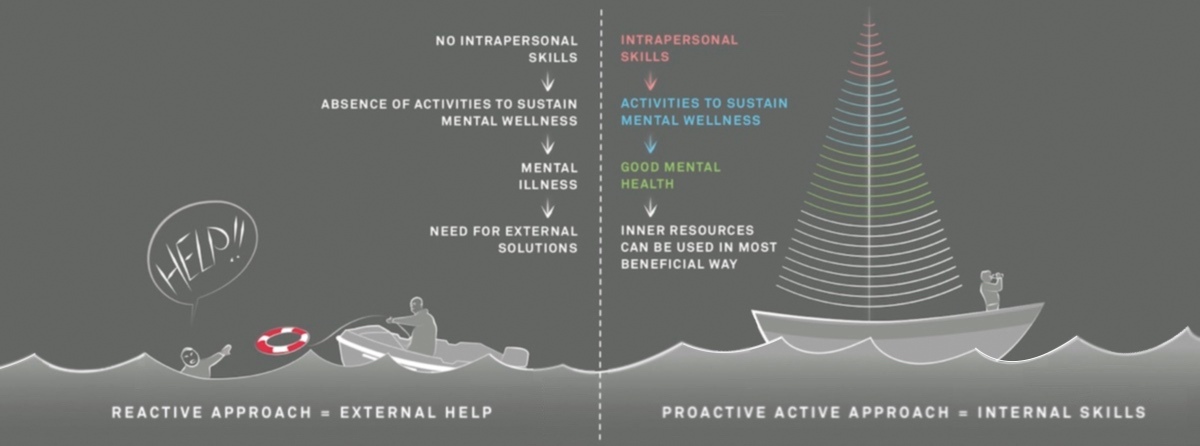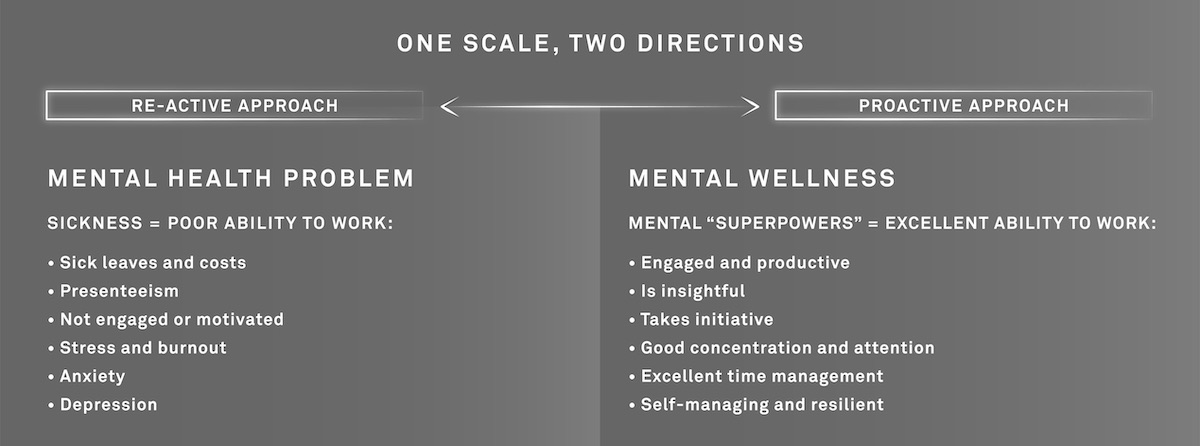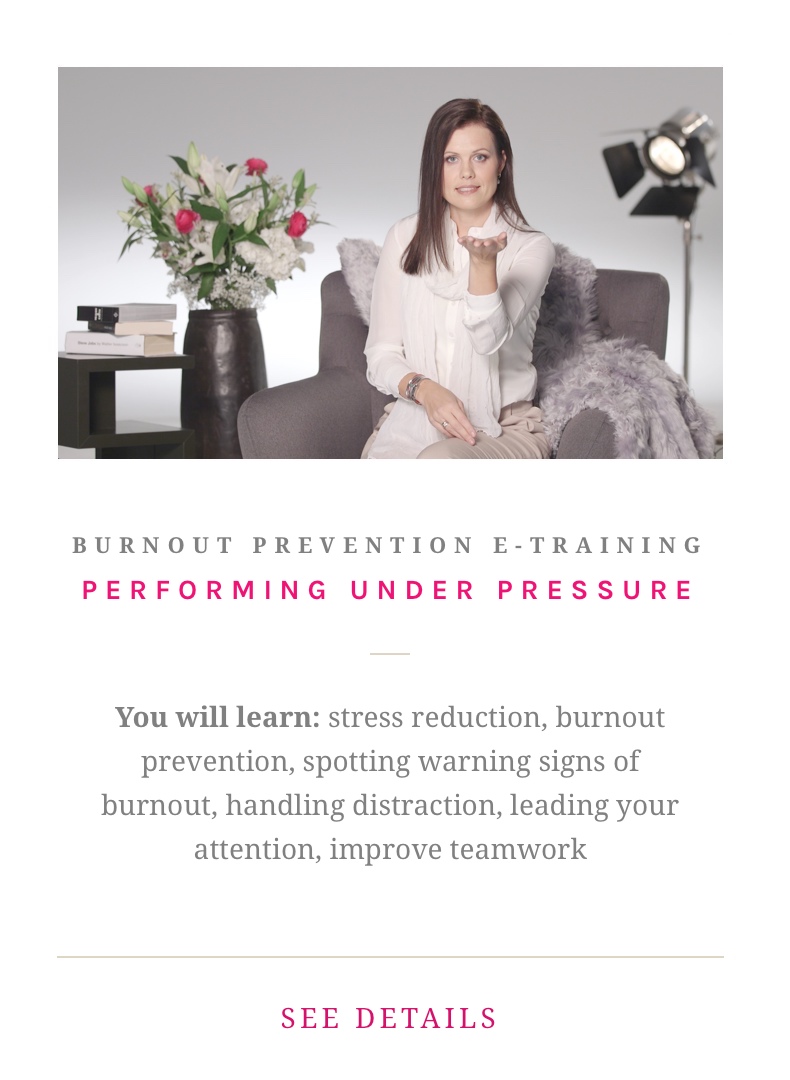The mental health continuum serves as a dynamic framework within the realm of workplace wellness and mental wellbeing. It delineates the spectrum of mental health states individuals may typically encounter, ranging from excellent mental wellness to mental illness.
The mental health continuum illustrates the fluid nature of mental health and underscores its importance in promoting employee mental wellness, mitigating stress, and averting burnout.
What is the mental health continuum?
At one end of this continuum lies optimal mental wellbeing (see the right-hand side of the graph) that allows you to thrive.

In the mental wellbeing state, you experience robust mental wellness, characterized by a profound sense of fulfillment, resilience, and adept coping skills to manage everyday stressors. Employees in this state tend to be highly productive, engaged, and content in their work. Such employees thrive and dare to look forward.
As we progress along the continuum, we first encounter normal stress – a reasonable response to occasional challenges that can even reduce focus and performance.
Mild to moderate stress may ensue as individuals move further along the spectrum. If not managed adequately, this stress can become chronic, resulting in reduced productivity and increased absenteeism.
Strategies such as stress reduction training and promoting work-life integration and training our minds prove invaluable to returning to a state of excellent mental wellness. This allows access to our 'mental superpowers' that are listed below as excellent mental health examples.

Chronic stress levels or constant anxiousness marks a significant deviation from optimal mental health. Efficient prevention measures, such as workload management, regular self-testing and are crucial at this stage and allow to make good changes when combined with mental wellness training.
Illness side of the mental health continuum
Closer to the far end of the continuum (on the left side of the graphs) lies burnout, a severe state of emotional, physical and mental exhaustion that gradually develops from chronic stress and unmanageable work demands.
Those experiencing burnout (click on the link to see the definition of burnout) face heightened risks of physical and mental health issues, often necessitating extended time off work. It is the illness end of the continuum (see the left-hand side of the graphs above) where you meet illnesses like depression and anxiety disorders that hinder normal life.
Most of us fail to maintain excellent mind health as we have had no mental wellness training and lack proper intrapersonal skills the downward spiral is hard to stop. When experiencing severe mental health problems or illnesses one needs to turn to a psychologist or psychiatrist to get support on recovery.
To foster a compassionate and mentally healthy workplace, organizations must not only acknowledge the mental health continuum but equally take proactive steps to support employee mental wellness.
Encouraging open conversations about mental health is great, but not enough. Here you need to efficiently implement stress reduction and burnout prevention training and mental fitness training so that people notice their inner processes. Ideally, such training should be available for every person in your team.

Only when you start to improve your individual intrapersonal skills can you get better at managing your inner reactivity. This allows adequate responses and permits you to deal with life challenges and workloads without losing your mental wellness.
Remember, all skills are personal. This is equally valid with professional skills and intrapersonal skills.
Just like you train every person to get better as a professional, you need to allow every person to train their minds to be better as self-leading individuals.
Conclusion
Recognizing the fluid nature of mental health and looking at it as a continuum enables us to proactively address mental wellbeing, emphasizing a stance of proactivity and prevention.
Mind health training has the power to contribute to promoting overall employee wellness and can prevent burnout and more severe mental health problems before those turn into illnesses.
|




